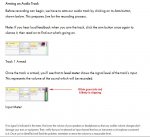And... Here I am!
Please, listen until the end because it's there that you can mostly listen the problem, at like 0:51 and on.
I want to specify that I was not very close to the microphone! I mean I wasn't far but I wasn't even close. I tried to have a right distance...
I didn't put any reverb so that you can listen well...
I hope you could help me
Please, listen until the end because it's there that you can mostly listen the problem, at like 0:51 and on.
I want to specify that I was not very close to the microphone! I mean I wasn't far but I wasn't even close. I tried to have a right distance...
I didn't put any reverb so that you can listen well...
I hope you could help me






 Anyway I'll take a look at the video, thank you very much!
Anyway I'll take a look at the video, thank you very much!